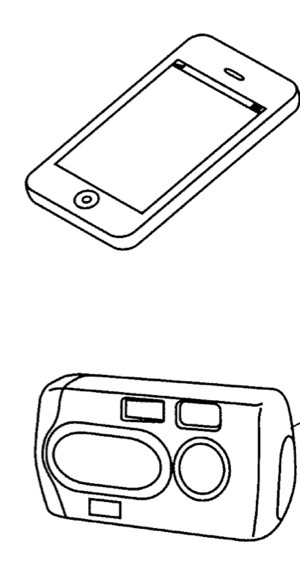An Apple patent (number 7,949,250) for an electro-mechanical shutter control has appeared at the US Patent & Trademark Office. It involves the shutter in iOS devices and the iSight (“cellular phones and multi-function or smart phones”), but also hints at a “dedicated” video and still cameras.
The patent is for a method in a camera device having an image sensor and an electro-mechanical shutter mechanism. A constant drive current is applied to the shutter mechanism to close shutter at the end of a first exposure. Then, a decaying drive current is applied to the shutter mechanism during a readout interval for the first exposure. Other embodiments are also described and claimed. Other embodiments are also described and claimed. Richard Tsai is the inventor.
Here’s Apple’s summary of the invention: “As discussed above in the Background, in an effort to obtain lower power consumption, the drive current of a bipolar electro-mechanical shutter mechanism should be pulsed over as short an interval as possible. However, when shortening the close shutter pulse at the end of a given exposure, the quality of the captured image for that exposure may suffer due to noise (e.g., banding or other visible artifacts).
“This image noise is likely induced during readout while there is power supply ringing or ground bounce in the image sensor’s supply and/or reference or ground connections. The latter may be caused by the pulsed drive current of the shutter mechanism motor, whose ground is in most cases connected to that of the image sensor. That pulse, which is needed to close the shutter at the end of a given exposure, may cause ringing or ground bounce during the readout interval for that exposure.
“In accordance with an embodiment of the invention, a method in a camera device having an image sensor and an electro-mechanical shutter mechanism includes the following operations. A drive current of the shutter mechanism is forced to change rapidly, from a neutral range to a close shutter range, at the end of a first exposure taken by the image sensor. Then, the drive current is forced to change slowly, from the close shutter range to an open shutter range that is opposite in polarity, during readout of the first exposure. This may help alleviate visible artifacts in the captured image, by reducing ringing on a power supply line or ground bounce during the readout interval.”
— Dennis Sellers



